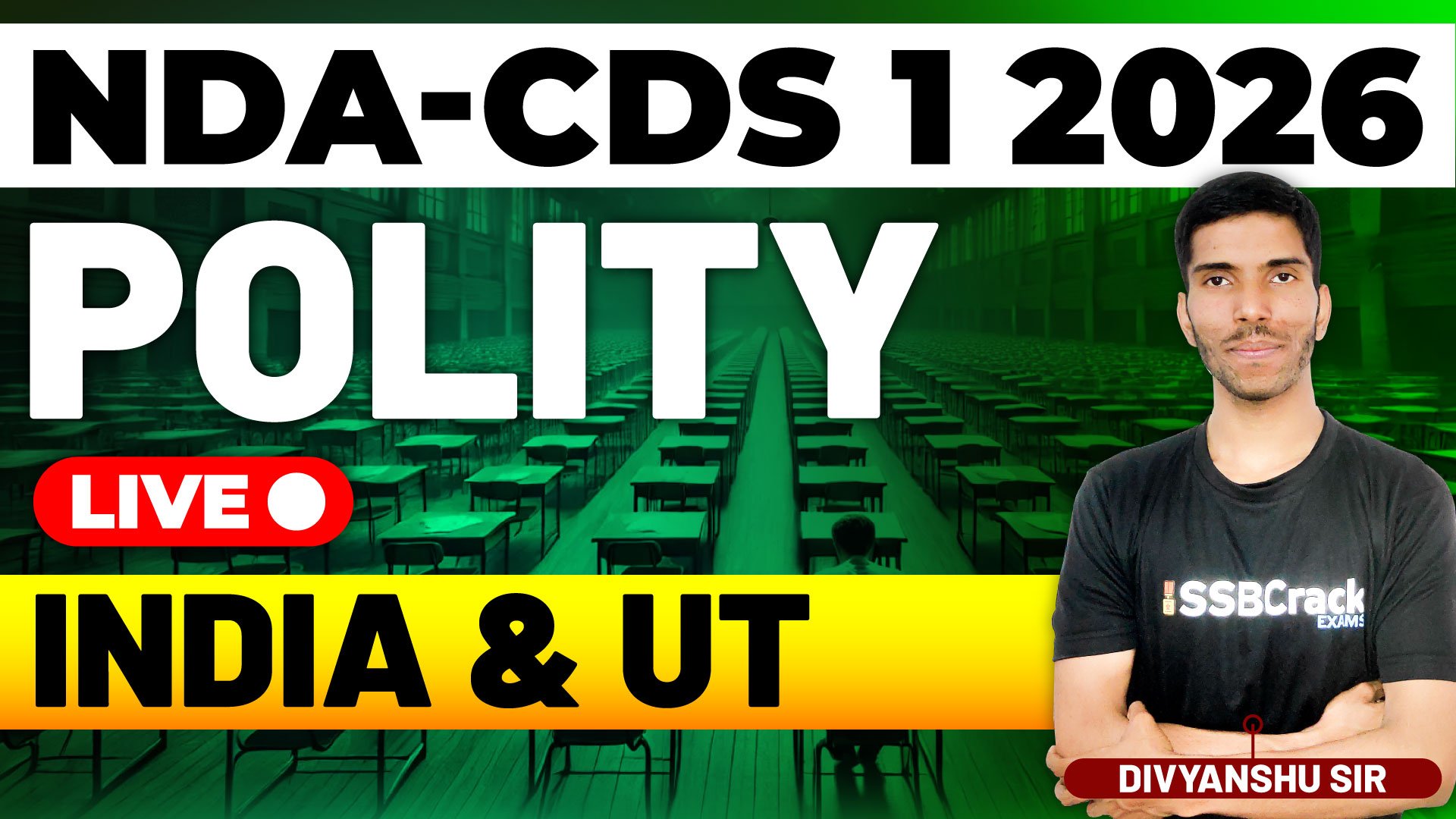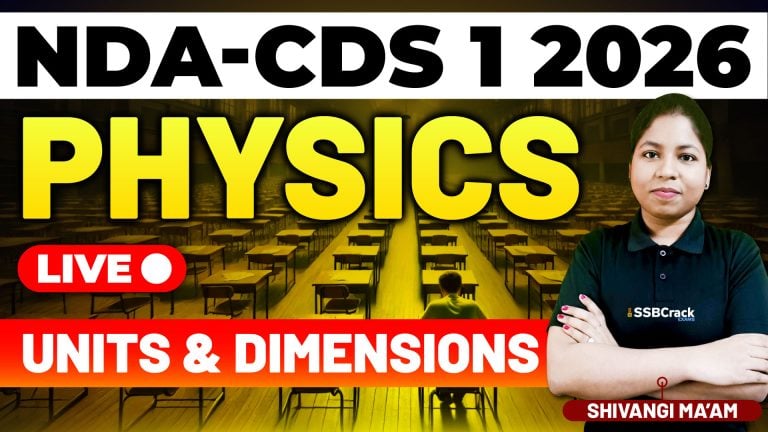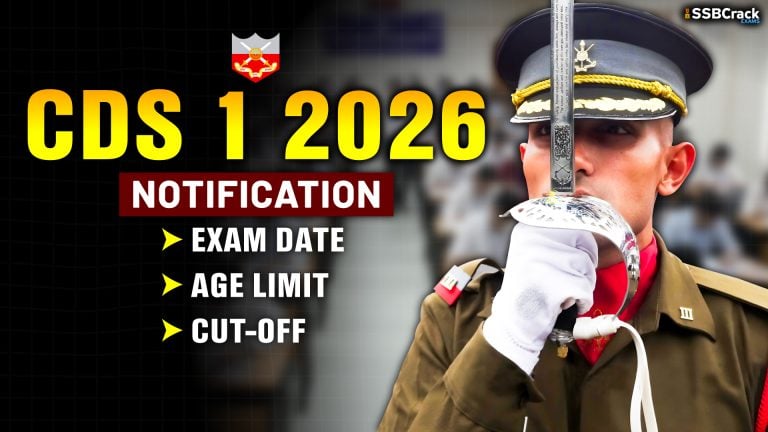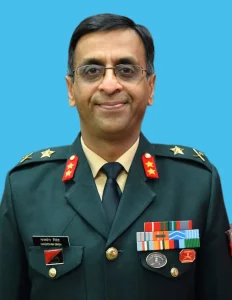India, officially known as the Republic of India, is a Union of States as mentioned in Article 1 of the Indian Constitution.
NDA & CDS 1 2026 Exam Polity – India & UT
The Constitution declares India as a “Union of States” rather than a federation of states, emphasizing the indestructible unity of the nation. The country’s political and administrative structure is divided into States and Union Territories (UTs), each having a distinct status, governance model, and administrative control.
India: The Union of States
- The Constitution of India came into effect on 26th January 1950, establishing India as a Sovereign, Socialist, Secular, Democratic Republic.
- According to the First Schedule of the Constitution, India comprises 28 States and 8 Union Territories (as of 2025).
- The distribution of power between the Centre and the States is defined in the Seventh Schedule, dividing subjects into the Union List, State List, and Concurrent List.
Formation and Reorganization of States
- The reorganization of states in India began with the States Reorganisation Act, 1956, which created states based on linguistic lines.
- Since then, several states have been created, merged, or renamed through constitutional amendments and parliamentary acts.
- The Parliament has the power to:
- Form new states or Union Territories.
- Alter boundaries or names of existing states (Article 3).
Union Territories: An Overview
Union Territories (UTs) are regions directly administered by the Central Government through an Administrator or Lieutenant Governor (LG).
However, some UTs have been granted partial statehood and have their own elected legislatures.
Current Union Territories of India (as of 2025):
| Union Territory | Capital | Special Feature / Administration |
|---|---|---|
| Andaman and Nicobar Islands | Port Blair | Under a Lieutenant Governor |
| Chandigarh | Chandigarh | Shared capital of Punjab and Haryana |
| Dadra and Nagar Haveli and Daman and Diu | Daman | Formed by merger of two UTs in 2020 |
| Delhi (NCT of Delhi) | New Delhi | Has its own Legislative Assembly |
| Jammu and Kashmir | Srinagar (Summer), Jammu (Winter) | UT with Legislative Assembly (since 2019 reorganization) |
| Ladakh | Leh | UT without Legislature |
| Lakshadweep | Kavaratti | Smallest UT of India |
| Puducherry | Puducherry | Has Legislative Assembly and CM |
Special Status of Union Territories
- Delhi, Jammu & Kashmir, and Puducherry have Legislative Assemblies, meaning they enjoy partial statehood with elected governments.
- Other UTs are governed directly by the President of India through Administrators or Lieutenant Governors.
Recent Changes in the Political Map of India
- Reorganization of Jammu & Kashmir (2019):
- The Jammu and Kashmir Reorganisation Act, 2019 bifurcated the former state into two Union Territories — Jammu & Kashmir and Ladakh.
- J&K retained a legislative assembly, while Ladakh does not have one.
- Merger of Union Territories (2020):
- The UTs of Dadra and Nagar Haveli and Daman and Diu were merged into a single UT to improve administrative efficiency.
Constitutional Provisions Related to States and UTs
| Article | Provision |
|---|---|
| Article 1 | Name and territory of the Union |
| Article 2 | Admission or establishment of new states |
| Article 3 | Formation of new states and alteration of boundaries |
| Article 239 | Administration of Union Territories |
| Article 239A | Creation of local legislatures or councils of ministers for certain UTs |
| Article 240 | Power of President to make regulations for certain UTs |
| Article 241 | High Courts for Union Territories |
Key Points for NDA & CDS Exam
- India has 28 States and 8 UTs.
- Articles 1–4 deal with the Union and its Territory.
- The Parliament has exclusive power to reorganize states and UTs.
- Delhi, Puducherry, and Jammu & Kashmir have Legislative Assemblies.
- Ladakh and Lakshadweep are the smallest UTs in area and population, respectively.
- The Andaman and Nicobar Islands are the only UT with a tri-service command (ANC Command).
Conclusion
India’s division into States and Union Territories reflects a balance between decentralized governance and national unity. While States enjoy a higher degree of autonomy, Union Territories ensure the Central Government’s administrative presence in strategically and culturally important regions. Understanding this structure is crucial for aspirants of the NDA and CDS exams, as it forms the foundation of Indian polity and governance.



















